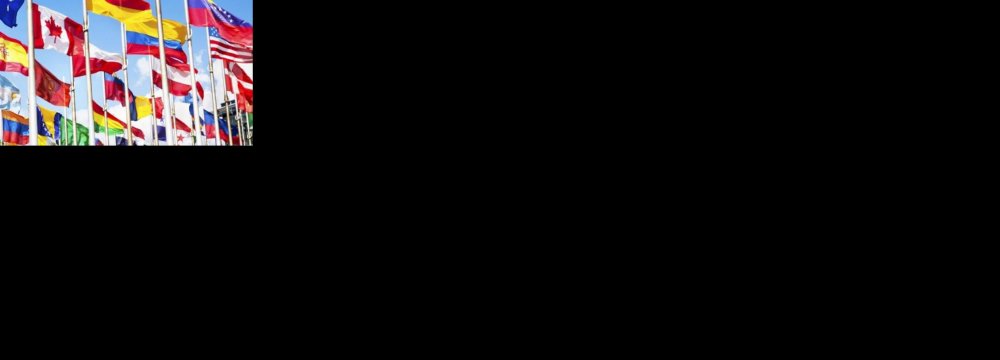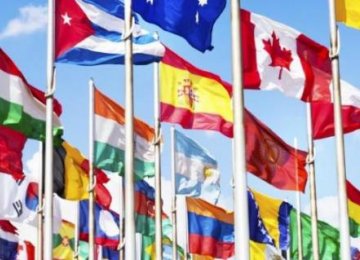Nation branding aims to measure, build and manage the reputation of countries. Some approaches applied, such as an increasing importance on the symbolic value of products, have led countries to emphasize their distinctive characteristics.
It is still a developing field wherein scholars continue their search for a unified theoretical framework. Many governments have resource dedicated to nation branding.
Their aim is to improve their country’s standing, as the image and reputation of a nation can dramatically influence its success in attracting tourism receipts and investment capital; in exports; in attracting a talented and creative workforce and in its cultural and political influence in the world.
In its latest annual report on the world’s most valuable nation brands, Brand Finance–a leading independent brand valuation and strategy consultancy–rated Iran as the fastest growing nation brand in 2015.
Brand Finance is a London-based independent intangible asset valuation institute, advising strongly branded organizations, or those with valuable intangible assets, on how to maximize their value through effective management of their brand and other intangible assets.
“In a global marketplace, a nation brand is one of the most important assets of any state, encouraging inward investment, adding value to exports and attracting tourists,” says David Haigh, the CEO of Brand Finance.
“Governments, trade bodies and businesses must take steps to ensure that their nation brand is strategically appropriate, well-managed and regularly monitored and understand how to respond in a crisis, in order to maximize the benefits and minimize damage.”
In the 2015 valuation, the US has been ranked the world’s most valuable nation brand due mostly to the country’s sheer economic scale. Next came China, Germany, the UK, Japan, France, India, Canada, Italy and Australia in a descending order.
However, one of the most striking highlights of the report is the rating of Iran as the world’s best performing nation brand followed by Cameroon, Tanzania, Kenya and Zambia. Brand Finance attributed the achievement to “President Hassan Rouhani’s moderate approach which is slowly shifting international perceptions of the country’s potential.”
“With a market of 77 million people, vast hydrocarbon reserves and a highly educated population, Iran certainly has a receptive audience globally,” the report reads.
The London-based consultancy advises Iran to assiduously manage its communications with its newfound suitors making a carefully assessed nation branding strategy almost as important as traditional diplomacy.
Managed correctly, “Iran’s ancient treasures, sophisticated population, strategic location and natural assets” could be used to enhance its reputation, according to Brand Finance.
The report also touches on the prospects of major world countries’ trade ties with Iran, noting that France and Germany have been faster to reach out while they had a more established presence in Iran prior to sanctions being imposed.
“France’s Peugeot was the market leader in the Iranian auto market for example. However, its perceived abandonment of the country may mean other European firms are better placed to profit.”
It is noteworthy that the worst performing nations in terms of brand value growth were Ukraine, Peru, Russia, Honduras and Argentina.
Methodology
Brand Finance measures the strength and value of the nation brands of 100 leading countries using a method based on the royalty relief mechanism employed to value the world’s largest companies.
The first step is to determine “Nation Brand Strength” by reference to performance on dozens of data points across three key pillars: Goods & Services, Investment and Society. These are divided into sub-pillars: Tourism, Market, Governance and People & Skills.
These are further subdivided into individual metrics. Each metric is scored out of 100 and together contribute to an overall Brand Strength Index (BSI) score for the nation brand, also out of 100. Based on the score, each Nation Brand is assigned a rating from AAA+ to D in a format similar to a credit rating.
Nation Brand Strength is the part of Brand Finance’s analysis most directly and easily influenced by those responsible for their country’s nation brand campaigns. With AAA’s, Singapore has been rated as the world’s strongest nation brand in 2015, followed by Switzerland and the UAE, Finland, New Zealand, Hong Kong, the Netherlands, Luxembourg, Qatar and Norway in a descending order.
Iran has been given an A- brand rating in 2015.
Under the investment pillar, the top 10 nation brands were Singapore, Switzerland, Hong Kong, the UAE, Qatar, Finland, Malaysia, New Zealand, the US and Norway in a descending order.
The second step is calculating the royalty rate. The BSI score out of 100 is applied to a royalty rate range. The score determines where within this range a country’s royalty rate will be set; the higher the score, the higher the royalty rate.
Next comes gauging the revenues. The nation brand valuation is based on five year forecasts of sales of all brands in each nation. Gross domestic product is used as a proxy for total revenues. Forecast GDP is derived by reference to historic GDP trends and long-term economic growth forecasts from public and private organizations, including the OECD and Oxford Economics.
In addition, an annuity is calculated on the final year’s brand contribution to account for the value of the nation brand into perpetuity.
Step four is measuring the Weighted Average Cost of Capital or Discount Rate. In order to account for the risk across each national economy a discount rate is calculated. This represents the average cost of a brand’s sources of finance and the minimum return required on the brand asset. The discount rate is used to calculate the present value of future brand earnings (accounting for the time value of money and the associated risk).
As the last step brand valuation is carried out by applying the calculated royalty rate to revenue data to derive a total brand contribution for both the nation brand value (i.e. the nation brand plus corporate brands) and the pure nation brand effect value alone.
The resulting figures are then taxed at the local corporate tax rate. The brand contribution after tax is discounted back to a “net present value” using the discount rate. The original brand contribution figures are then added to their discounted values into perpetuity to derive both the nation brand value and the nation brand effect value.
Iran’s brand value is put at $159 billion in 2015, up 59% from 2014’s $100 billion. The upward change is the highest among all the 100 countries surveyed in the report.





